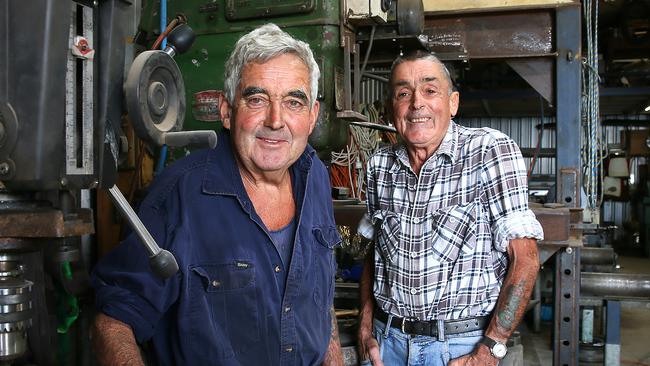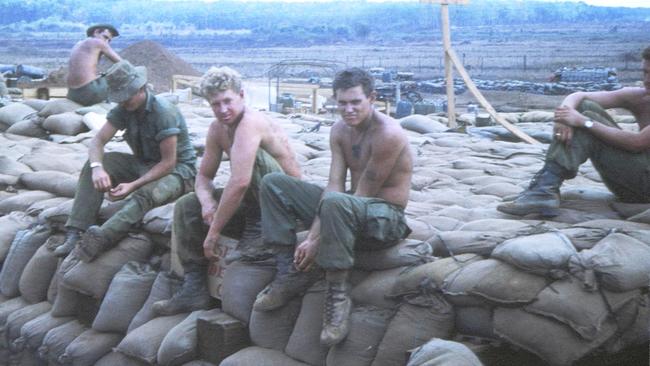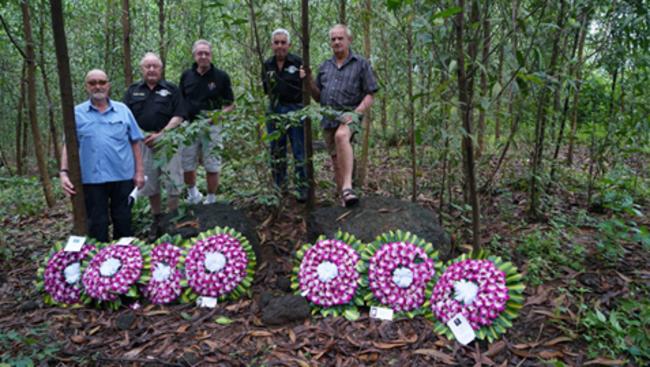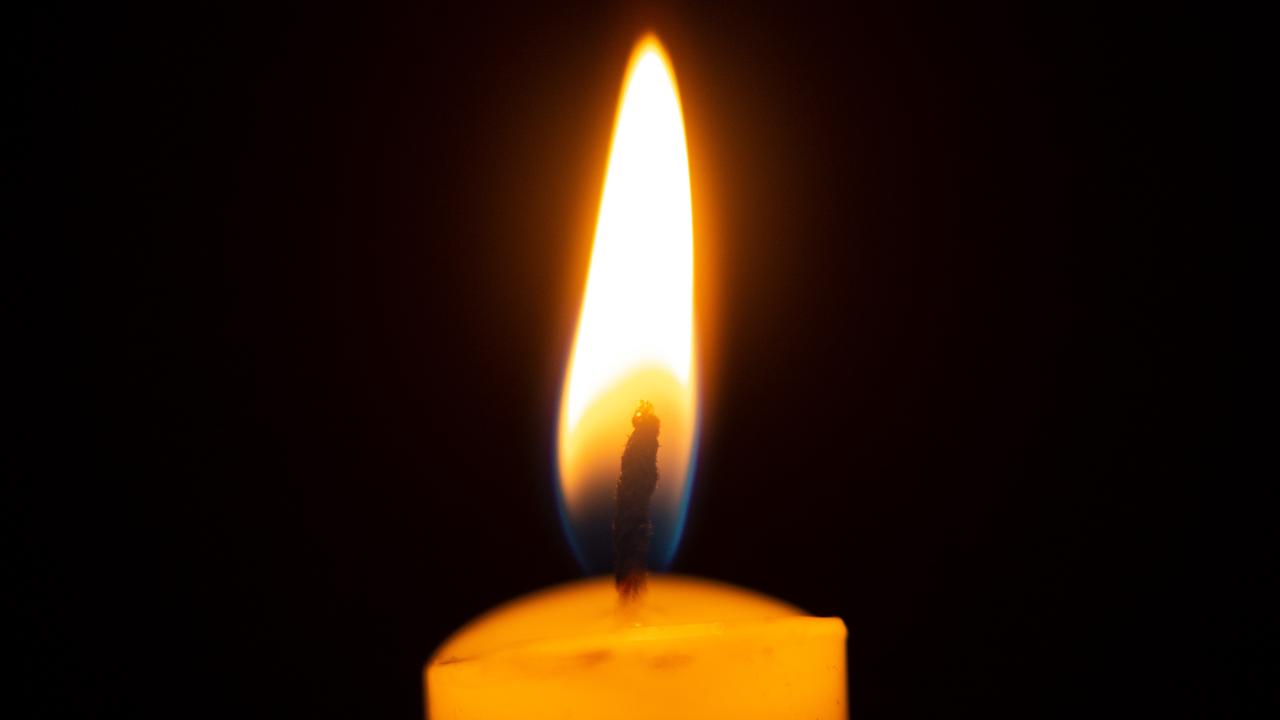Vietnam Tunnel Rats shed light on deadly ambush
TASMANIAN brothers Norm and Peter Cairn are part of a small but gutsy band of Vietnam Veterans called the Tunnel Rats.

ANZAC Centenary
Don't miss out on the headlines from ANZAC Centenary. Followed categories will be added to My News.
TASMANIAN brothers Norm and Peter Cairns are part of a small but gutsy band of Vietnam Veterans called the Tunnel Rats.
The tight-knit unit of Sappers had the job of checking and destroying the labyrinth of tunnels built during the war and to find and neutralise mines and booby traps before infantrymen and machine-gunners ventured into the jungle.
The Woodbridge brothers are also among a group of veterans — the Vietnam Tunnel Rats Association — wanting the story of how a group of Tunnel Rats was killed, wounded and traumatised in an enemy ambush in 1968 to be more widely recognised.
Norm Cairns said there were “miles and miles of tunnels” across the battlefields of Vietnam and the first were found by Australian servicemen.
Units were then established by both the Australians and Americans to focus on these hidden thoroughfares.
“It was our job to go down the tunnels, check them out, map them out and destroy them,” Norm Cairns said.
“Being down there did make your heart race a bit. But I returned home with no hang-ups. It was part of life and the job we did.”

Both Norm and his younger brother Peter were in the regular army and volunteered to join the Tunnel Rats.
Both were lucky enough to return home.
Peter did receive serious spinal and shrapnel injuries when an armoured personnel carrier on which he was travelling was blown up.
“I was sitting right above the point that it exploded,” Peter said.
He spent time in hospital and at base before heading “back bush”.
“Our role was highly specialised and dangerous and carried the highest casualty rate of any unit,” Peter said.
“But it was a role we volunteered for and we worked in a close-knit unit.”
Norm said the story of the Battle of Fire Support Base Andersen in February 1968, in which three infantrymen and one American soldier were killed, had been largely overlooked in the history books.
Andersen was an Australian base with additional New Zealand and American elements, established alongside the communist forces’ predicted lines of movement.
“Everyone talks about the battle of Coral/Balmoral and the Tet Offensive but no-one talks about what happened at Andersen base,” Norm said.
On February 17, 1968, a group of 10 Sappers from the base, near Bein Hoa, came under attack by the Vietcong.
The men, from the 1st Field Squadron, Royal Australian Engineers, were sent to man an overnight listening post about 300m out from the base and its protective barbed wire defences.
Their job was to provide early warning of advancing enemy forces.
Four men were killed in what was the first massed enemy assault on an Australian base in Vietnam. Three more were wounded.
To add to the tragedy, two of three unhurt men were killed in action in a mine incident just one month later.

Norm and his team had been in the same spot the deadly ambush took place, just the night before.
“There was a toss of a coin to see who would go that night and who would go the night after,” he said.
“I have since heard the enemy saw us go out there that first night and put plans in place to attack the next. It was creepy out there, I remember that, it just wasn’t a good feeling.”
The terrain was rocky, making it impossible to dig pits as protection from mortar, rocket or grenade attacks.
The 10 men on patrol that night — Staff Sergeant Colin McLaughlin, aged 38, radio operator Lance Corporal John Garrett, 20, and Sappers David Steen, 21, Allan Pattison, 19, Geoff Coombs, 22, Vince Tobin, 24, Murray Walker, Robert Creek, 22, Jack Lawson, 18, and Lyndon Stutley, 21 — were isolated and exposed.
Staff Sergeant C.W. McLaughlin, Lance Corporal J.E. Garrett, Sapper A.G. Pattison and Sapper D.J. Steen were killed on the knoll.
Sappers Walker, Creek and Lawson were injured.
In a cruel twist of fate, two of those unhurt, Sappers G.J. Coombs and V.J. Tobin, were to be killed in action one month later in a mine incident in the Long Hai Mountains.
“The comradeship within the Tunnel Rats who served in Vietnam is intense and unbreakable,” an article written in Holdfast, the official newsletter of the VTRA, says.
“For the 3 Troop Sappers, the standing patrol tragedy and the attacks on Andersen added a new depth and dimension to that bond.”
Originally published as Vietnam Tunnel Rats shed light on deadly ambush


